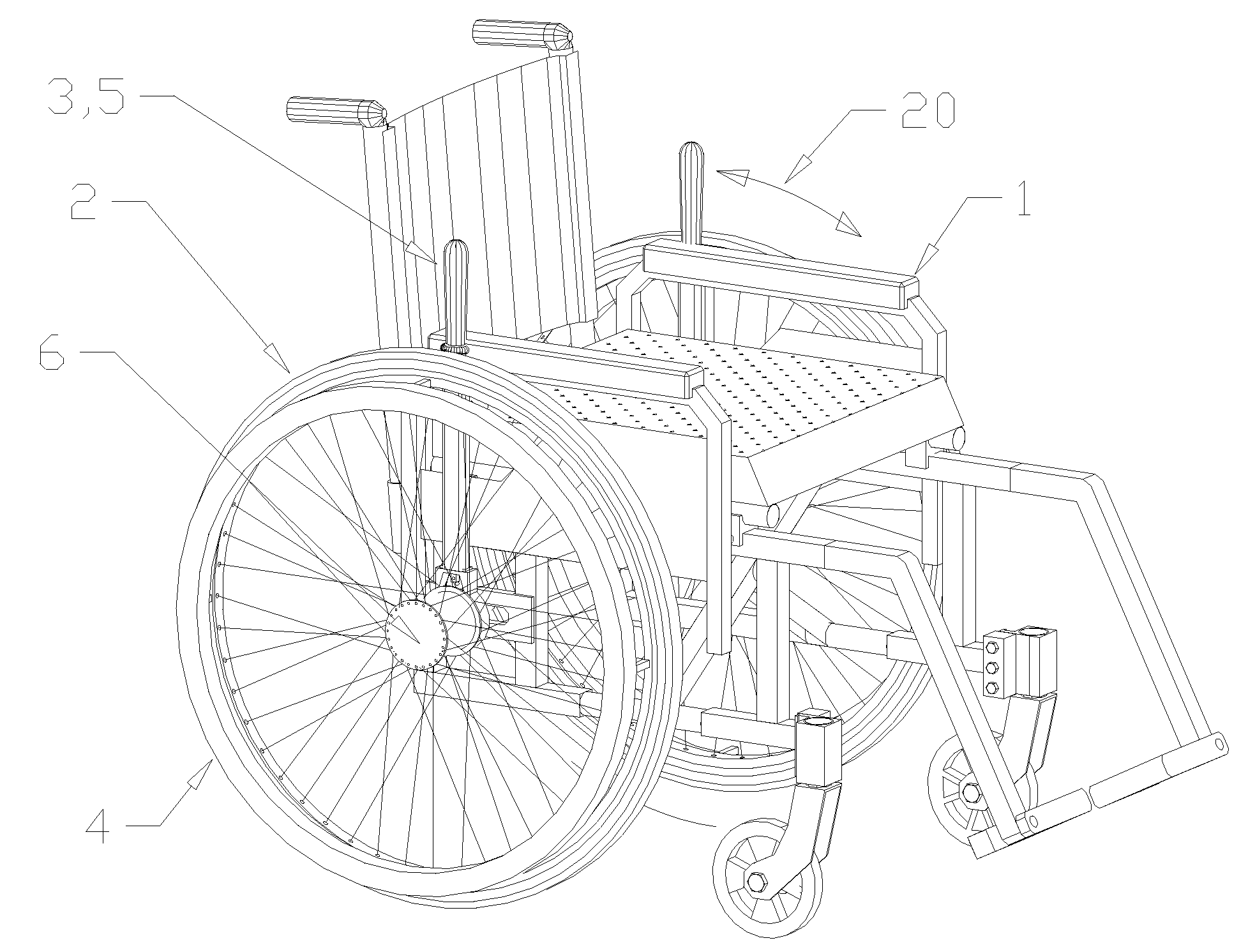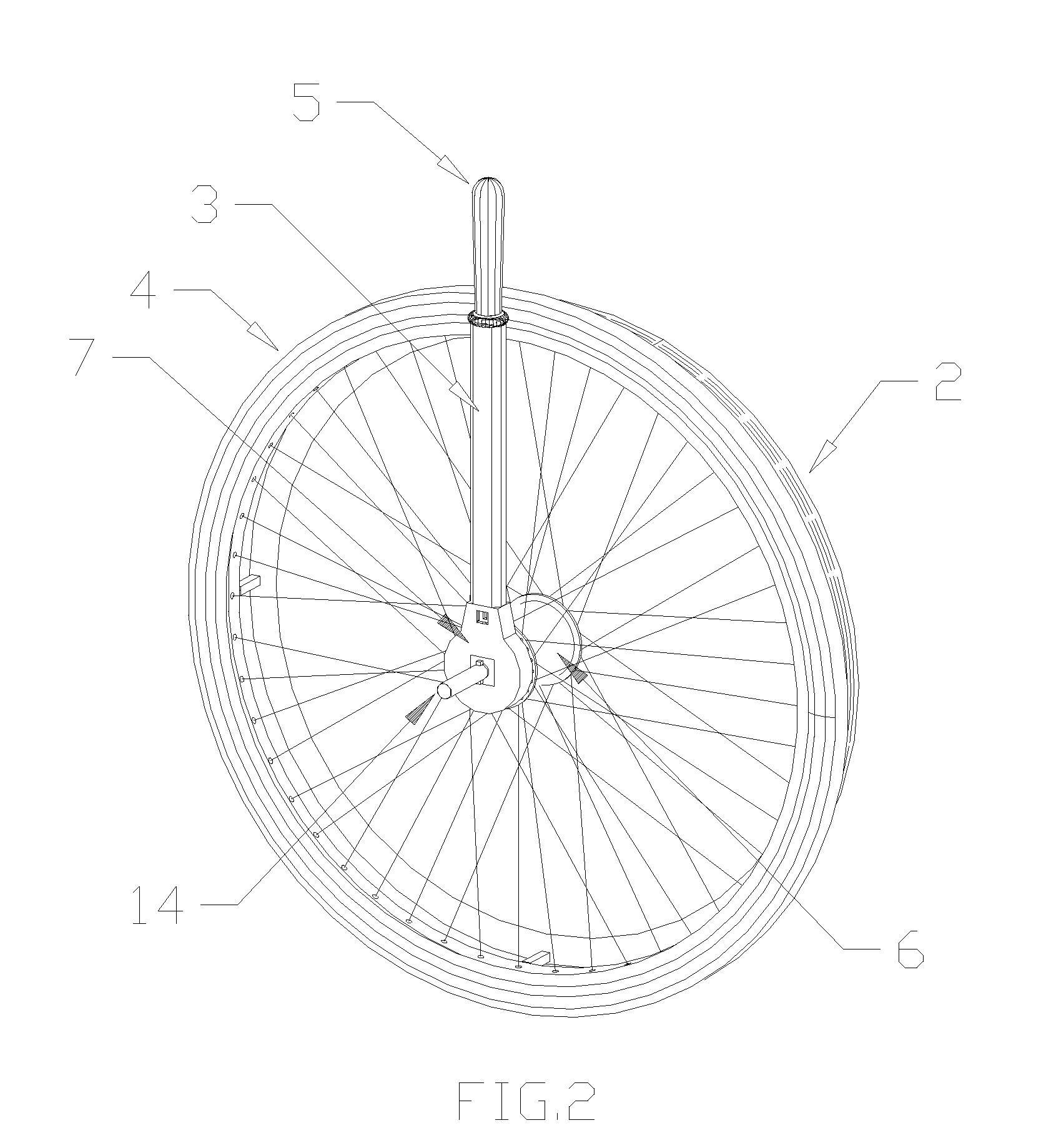Lever Drive Wheelchair Transmission
a wheelchair and transmission technology, applied in the direction of wheelchair/patient transportation, transportation and packaging, gearing, etc., can solve the problems of limiting the general acceptance of potential users, affecting the safety of wheelchair users, so as to achieve less angular excursion
- Summary
- Abstract
- Description
- Claims
- Application Information
AI Technical Summary
Benefits of technology
Problems solved by technology
Method used
Image
Examples
Embodiment Construction
[0027]With reference to FIGS. 1 through 6, a typical wheelchair 1 is shown with a preferred embodiment of the lever drive wheelchair transmission installed on the wheelchair frame. It can be seen that propulsion levers 3 and associated hand grips 5 are placed to the inside of rear drive wheels 2. This position is preferable to outside placement as it allows handgrips 5 to be closer together side-to-side in an ergonomically advantageous position, and, unique to this invention, does increase the overall width of the wheelchair. It also makes the overall lever drive mechanism aesthetically less obtrusive, a feature shown by independent survey to be important to users. Lever motion arrows 20 indicate the approximate arc of reciprocating motion that the user would impart to levers 20 when propelling chair 1.
[0028]When propelling wheelchair 1 a user would (,rasp grip 5 and push or pull., thus imparting a propelling motion shown by arrow 20, and could, as desired, impact a directional shif...
PUM
 Login to View More
Login to View More Abstract
Description
Claims
Application Information
 Login to View More
Login to View More - R&D
- Intellectual Property
- Life Sciences
- Materials
- Tech Scout
- Unparalleled Data Quality
- Higher Quality Content
- 60% Fewer Hallucinations
Browse by: Latest US Patents, China's latest patents, Technical Efficacy Thesaurus, Application Domain, Technology Topic, Popular Technical Reports.
© 2025 PatSnap. All rights reserved.Legal|Privacy policy|Modern Slavery Act Transparency Statement|Sitemap|About US| Contact US: help@patsnap.com



